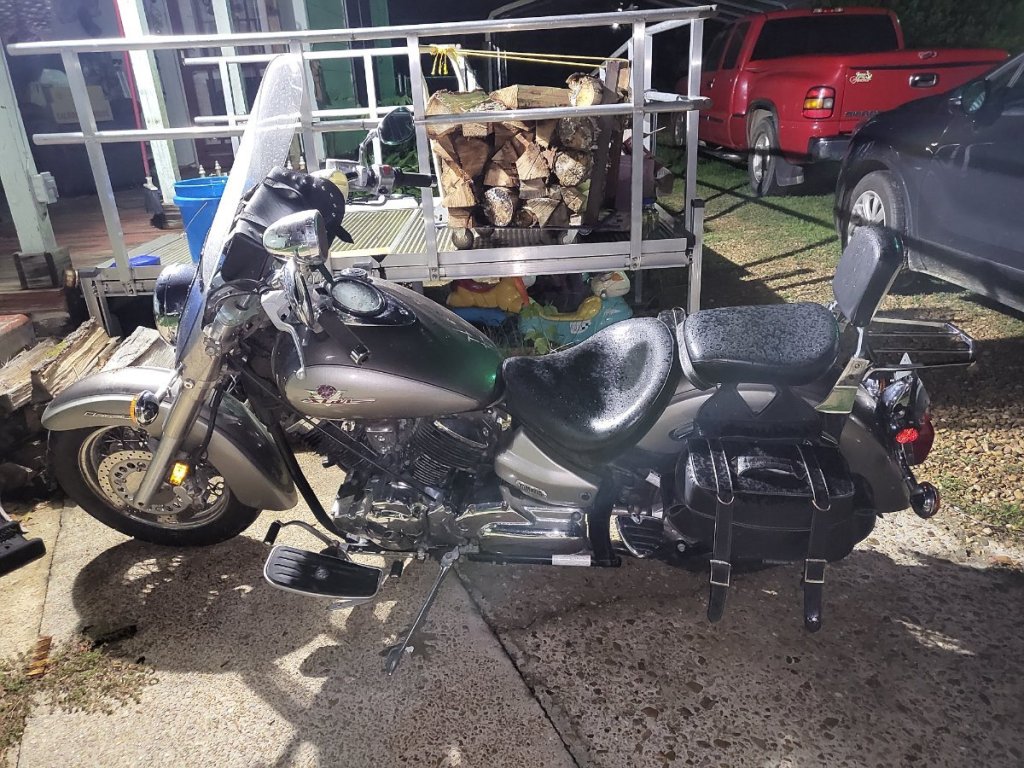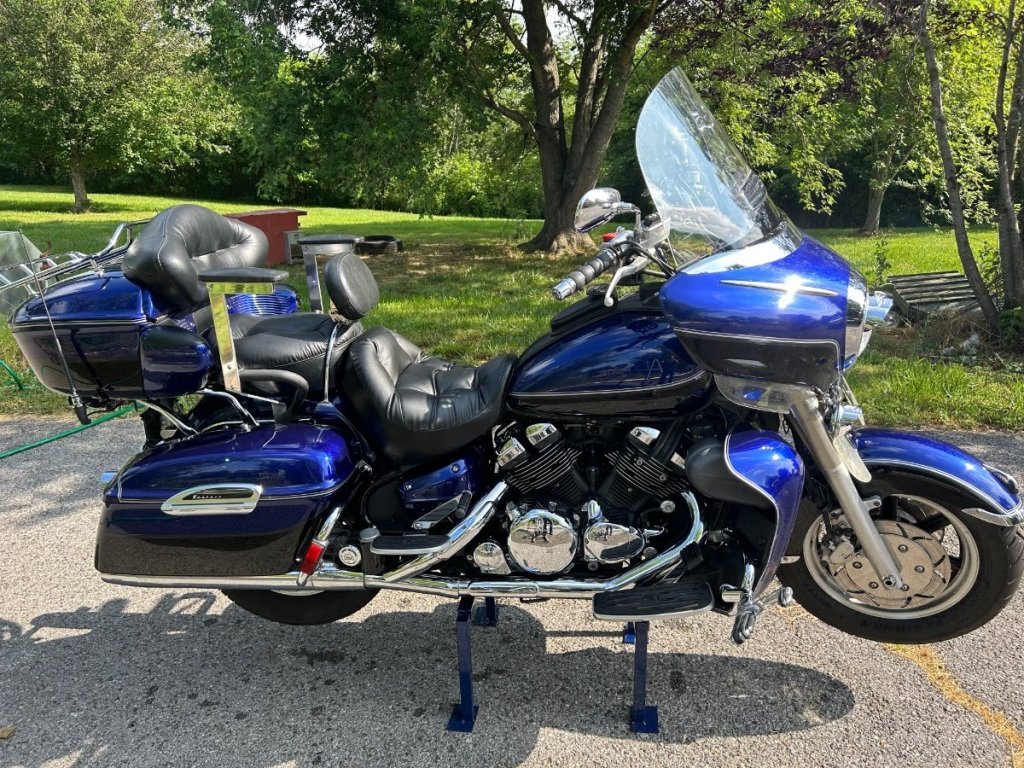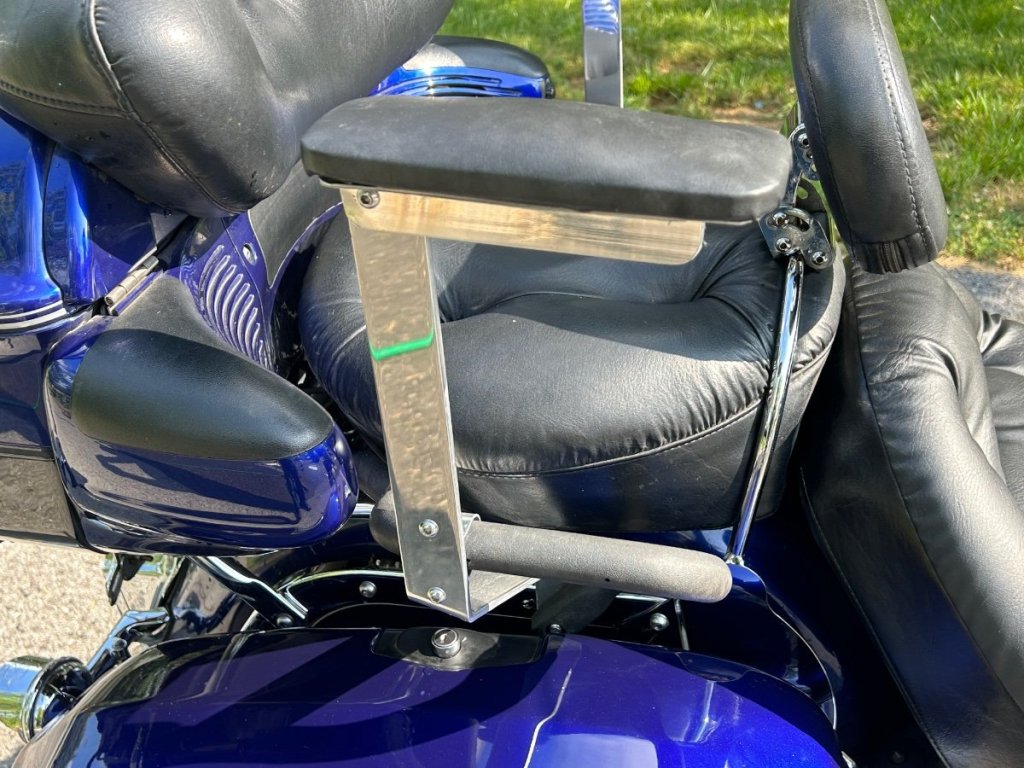Leaderboard
Popular Content
Showing content with the highest reputation on 06/14/2023 in all areas
-
I've studied the RSV wiring diagrams till I was almost crosseyed. I had two problems that I had decided were related. First of all, the bike would not start in neutral unless the clutch was pulled it. It should start without the clutch pulled in as long as it's in neutral. The second problem was that the cruise control would not set., Now, I'm not sure if either of these problems were there when I bought the trike or not because I don't remember even using the cruise or trying to start the bike in neutral. I had it in my mind that it was a wiring problem from when the Hannigan. kit was installed because the reverse also uses the neutral switch. I tracked a LOT of wiring trying to figure that out but found no issues with the wiring., I then ordered a new ignition cut off relay. That ended up correcting the issue of the bike not starting in neutral so that was good. Cruise still wouldn't set though. The troubleshooting guiide in the manual leaves a bit to be desired as it doesn't explain the results correctly. At any rate, I finally determined that the cancel switch might be the issue. I ended up taking the switches on the brake lever apart. It appears that somebody pressed the cancel switch to hard and it had got cocked a bit sideways, not even noticeable from the outside, and it wasn'nt making up. Got it reset and put back together and SUCCESS,. Now everything it working like it should. I've spent several hours trying to figure this out. My first problem was assuming that the two issues were related.3 points
-
I remember when I posted here nearly every day, and my fondest memory of meeting some of the members in St. Paul MN. which was at that time, my longest bike ride. That was on an '83 VR that I had fixed the second gear issue myself with help garnered from you folks. Today I have an '88 VR that I have had torn down for paint and other repairs, for about 3 years..... I'll get around to it. I also have a 2002 V-Star 1100 that I rarely ride because I can't get comfortable on, it's too small. Think I'll get busy on the '88 again, pretty sure the carbs need a good cleaning by now. Maybe I'll sell the V-Star. (this is not an add, just a comment.) Anyway, this still seems like about the best internet site around!3 points
-
GREAT JOB DON! My mom often joked that I was "Born with a wrench in my hand"! But because of a combo of "Color Blindness", and a lack of knowledge of advance electronic function, electrical issues are my least favorite thing to work on. Fortunately for me, my brother James is an electrical genius! Between the two of us, we actually make ONE really great mechanic! My hat's off to you, my friend for figuring out your electrical woes. Great Job! By the way Don, that Trike and trailer combo is a VERY nice looking unit! I hope you have good luck selling it. Earl.1 point
-
1 point
-
1 point
-
Uncledj, this is my second 1st gen, that is why i bought it, loved riding it! I also have a second gen, 05 tour deluxe and a 04 vstar 1100 that are rideable, have 2 maxims as projects along with the 88, just too much at the moment1 point
-
1 point
-
Hi Everyone So I pulled off the clutch cover today to try and sort the issue with my Clutch slipping. here is what i found. When I put the Engine together I looked at the 2 Clutches Boss that hold the Clutch steels, the part number stamped on both was exactly the same 26H00S01. so I did not look any closer to them at the time and figured i was good to use the 1300 Boss with the 1200 Pressure plate. Obviously I probably did not put them side by side until now, so as you can see the Clutch Bolt Standoffs are flush with the 1200 Boss whereas the 1300 Boss these same Bolt standoffs are extended about 10mm past the Boss. as you can see in the pictures. Completely My fault, but it should be good now as I feel more pressure on the Clutch lever now. I also rechecked all thicknesses of the frictions and the Steels, the frictions all measure 3 MM and all the steels are roughly 2 -2.2 mm and the Factory Dimples are all still there, so I should be good. Test drive again tomorrow Herman1 point
-
1 point
-
I "got the opportunity" so decided I would share... Do you have the carbs off? There's an easy way and a tough way to get the throttle and choke cables off. I finally found the easy way... The carb assembly also needs some "proper" persuasion to get up off their mount boots! Remove the air cleaner... there's a small hose at the front bottom... disconnect it at the air box. There's a large hose at the bottom, rear, center... disconnect it at the ENGINE... this lets you use the hose as a guide when you put it back (plus you can't get to the rear bottom of the air box when it's going back together. Loosen the four rubber boot clamps below the carbs and now it's time to work these up. They don't want to because it's a tight fit but work one side up a bit and then do the other until you have them up. I used two pieces of hardwood to pry the carbs up... one side a bit at a time. Then you pull the carbs a bit out the left side. Run the throttle adjust nut at the handlebar in to get some free cable. Loosen the adjustment coupler right at the carb all the way. Pull THAT cable housing up from the carb cable holder and slide the cable through the slot in the carb mounted holder... there's just enough slack to get it out of the holder! Then you can tip the carbs to see how to disconnect it. Now you can roll the carbs OPEN and get the takeup cable off. The choke is easy, loosen the clamp and slide the cable free. I had three mixture adjust screws set at about 2.5 turns out from bottom and a forth was frozen. I sprayed penetrant spray and over a day worked it in and out a bit at a time... I think the magic setting is 2 to 2.5 turns out from a CAREFULLY bottomed position. More on this later. Before you break the 4 carb assembly apart, make a little drawing of the choke linkage layout and note the spacers and washers on the choke coupling arms. The throttle couplers are straight forward, front and back halves are coupled by a plate and spring on the "balance adjusters", left and right halves are held by a clip-ringed coupling plate. The 4 carb assembly is held together by 16 large (5mm, I think) phillips head screws. These are going to be impossible to almost welded and will round off and make you invent dirty words unless you have the magic thing... the absolute right tool!!! Don't waste time, get one! I used a VERY large phillips bit (from an impact wrench set) that fits "PERFECT" and mounts into a regular socket... mounted on a regular ratchet. This gives you the leverage of the ratchet but you HAVE to have a large bit that fits TIGHT... Take the assembly to the parts shop if in doubt... you'll love me if you do... you'll have lots of new words if you don't. I threw these screws away when I got them out and replaced them with allen bolts from True Value ($4.00, but you'll never mess them up again!!!) Don't even think of using an impact to get these out... you'll break the fragile carb body and be back to inventing dirty words. It's real handy to have a friend hold the carbs on the bench while you break the bolts free. (Did I mention they were tight???) Any good carb cleaner should work fine. It's a question of aggressiveness and preference. Seafoam is good stuff, not terribly aggressive but safe and does a good job with time... you would probably want to soak overnight and follow with a really good scrubbing of parts. B-12 is MUCH more aggressive and (as such) needs more care and attention. I don't think Seafoam eats rubber... I KNOW B-12 WILL. I chose Berrymans so I wasn't waiting so long. It's a toss up to what you like. I didn't want to by 5 gallons of something to allow dipping all 4 carbs and I don't like to have too many "parts" floating around so I planned on doing each carb, one at a time. I used a cut down, lower 2/3s of an anti-freeze bottle as a "dip tank"... it JUST fits one carb body and two pints of cleaner just about cover the carb. You might want to buy three pints so that when you pull one carb, you can drain back most of the cleaner and trash the last bit that has all the dirty junk. I threw in the 5 jets for THAT carb at the same time... if in doubt, make a little diagram of each jet's size and it's location. I cleaned one carb at a time so nothing got mixed up and I could inspect each one on their own. Plus my work area is rather small. Now we have a new, big screw driver bit and four carbs laying on the bench... that bit is going to come in handy for breaking apart the covers! If you still have one "pinned, internal star" screw in each diaphragm cover... buy that tool at the parts store (common tool) and those screws throw them away... it's not worth the hassle... replace all 16 (four per carb) with allen bolts or buy four replacement screws. I used small vice grip pliers rather than buy the tool! It really buggers up the head but... who cares? I WAS a bit worried about buggering one up and still not able to get it out... I later found the right tool was cheap and readily available... I was first "told" it was a "special dealer tool"... grrrrr! Each choke slide can be "overhauled" in-place. Now is a good time as the carb body gives you leverage to get the big nut off. The slide cover nut just unscrews and out comes a spring and brass plunger, check the large brass plunger and spring, grease and reassemble. Then pull the screws holding the choke body to the carb and set aside. The deceleration pump (other side of the carb body) has a spring and diaphragm like a small version of the main diaphragms. These need to be pulled and inspected. The diaphragm can have small tears around the outside rim or maybe a pinhole that would need repaired. They don't "bounce" like the intake slides, they are vacuum driven to smooth sudden deceleration so they are basically set to "trip" open on activation. Clean and set these aside. On top, just inside the intake barrel, is a fixed, small orifice brass jet that comes out to be dipped and scrubbed carefully. I found a small, pointed art brush was perfect. Inside the carb diaphragm cover is a large spring and diaphragm assembly, pull and set aside. Inside that carb cavity is a large orifice brass jet that comes out to be dipped and scrubbed... There's also a small O-ring at the bottom edge that the diaphragm cover seals ... pull and set aside. Inside the float chamber area, pull the float and float valve. Unscrew the large brass screw (and washer) running through the main jet body... this holds the diaphragm needle housing. Pull the main jet body and pull it's three jets... the long, metering jet inside the middle tube (a large pierced tube looking thing), main jet on side and a small orifice jet in the left tube... this one needs care in cleaning. Be careful with the rubber plugs... they bounce real well if dropped and important that they fit tight when you reassemble!!! The diaphragm needle housing (large brass shaft) can now slide out through the center of the carb body... note that there's an O-ring under the main jet body block that slides over this shaft. Set everything aside with the jets and needle housing to end up in the soaker with the carb body. Ease the rubber drain hoses off the plastic barb very carefully and set aside. The carbs come with a brass sleeve in the carb body that keeps the idle mixture screws "captive" Carefully use a progressively larger drill and drill these out. Use air or ANYTHING to get all those brass filings out. NOW pull the idle mixture jets, spring, washer and O-ring. Use a small wire with a hook on the tip to pull the washer and o-ring if needed. Now go back and get the REST of the metal filings you missed! The carb bodies and jets are now ready to dip. B-12 liquid and spray are good cleaners for disassembly... do NOT use them on assemblies or on a running bike. It's too aggressive and can mess up rubber parts. For regular cleaning I use PJ carb cleaner... it's safer and also it's flammable so it actually HELPS a running engine (it surges like you sprayed ether!) where B-12 isn't and will want to kill the engine! Did I mention it kills rubber parts? "The factory-set needle-valve screw..."??? These are very fragile, tapered metering jets. I spray B-12 on a clean rag and buff these tapers and the main jets. They should be smooth and clean. Any nicks or scrapes and they are trash. The idle mixture screws on ANY carb are set by, very carefully, running them IN so they gently seat and then count the turns OUT from there. I think factory is right around 2 turns out. If you get heavy handed and screw them in hard, you damage the needle seat and get to replace that carb!!! It's a spring loaded screw... use a tight fitting flat blade screwdriver and ease then in. If in doubt... run them in and out a bit to clean the threads and get a better 'FEEL" for them bottoming. For repairing the pinholes in the main diaphragms, I was told to buy some Yamabond 4 It's put on very thin with a toothpick on the "worn spots".... I've only recently put the carbs back on and have run a few tanks through but when I repulled the diaphragms the stuff was exactly like when I put them in. This yamabond stuff is fairly thin and is perfect for this apparently and is also a great gasket seal but just use a tiny bit... Even better is to buy new ones! Oh yeah... don't mess with "close" O-rings... if they don't measure perfect or just a hair big... walk away! There's lots of sources... Napa didn't carry small ones but Kragen did. Napa usually has those odd parts that you need.1 point









